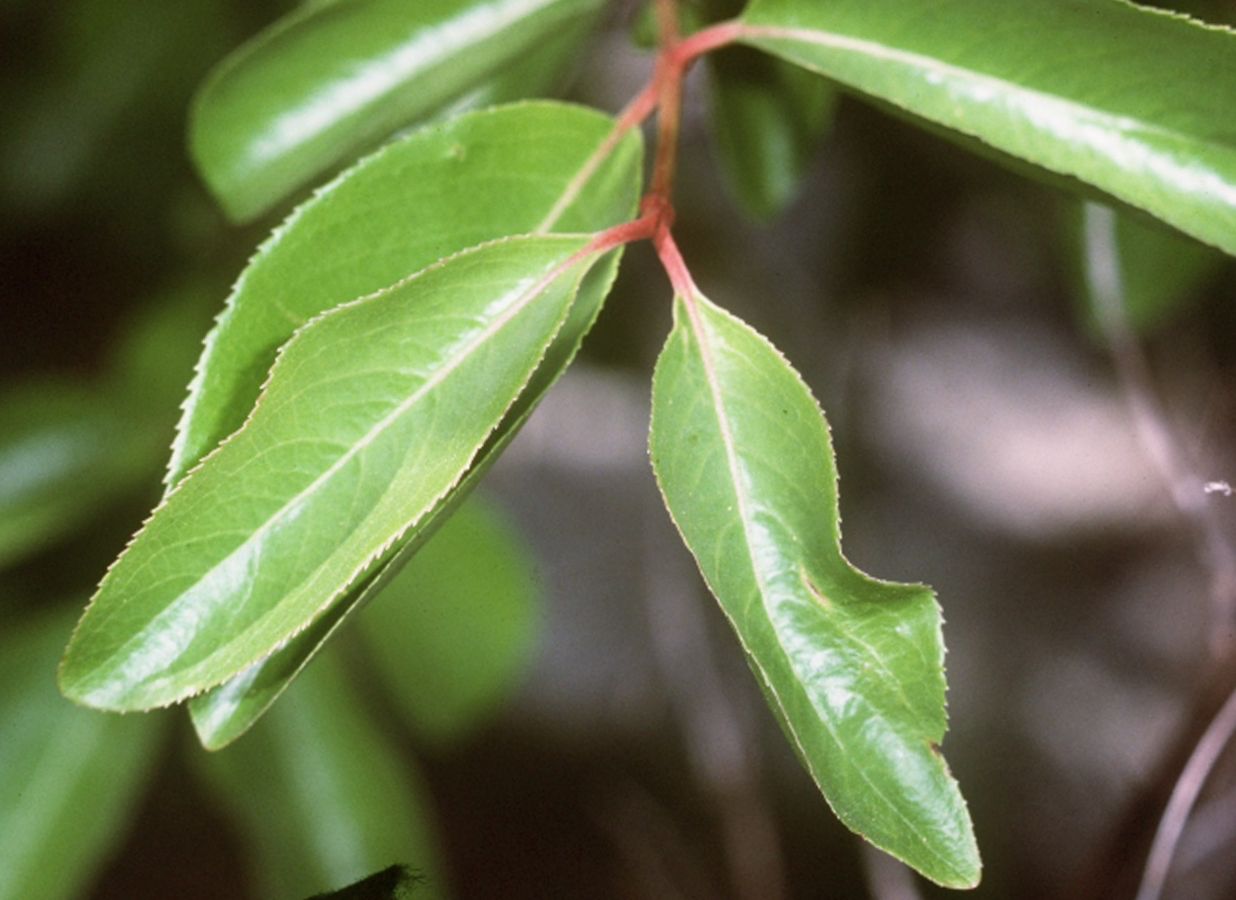Rusty Blackhaw
No. in Woodland Park: 1
No. in good health: 0
No. in fair health: 1
No. in poor health: 0
Viburnum prunifolium (known as blackhaw or black haw, blackhaw viburnum, sweet haw, and stag bush) is a species of Viburnum native to northeastern North America, from Connecticut west to eastern Kansas, and south to Alabama and Texas.
It is a deciduous shrub or small tree growing to 2–9 m tall with a short crooked trunk and stout spreading branches; in the northern parts of its range, it is a shrub, becoming a small tree in the southern parts of its range. The bark is reddish-brown, very rough on old stems. The branchlets are red at first, then green, finally dark brown tinged with red. The winter buds are coated with rusty tomentum. The flower buds ovate, 1 cm long, much larger than the axillary buds. The leaves are simple, up to 9 cm long and 6 cm broad, oval, ovate or orbicular, wedge-shaped or rounded at base, serrate, acute, with serrated edges with a grooved and slightly winged red petiole 1.5 cm long; they turn red in fall. The leaves are superficially similar to some species of Prunus (thus "prunifolium"); they come out of the bud involute, shining, green, tinged with red, sometimes smooth, or clothed with rusty tomentum; when full grown dark green and smooth above, pale, smooth or tomentose beneath.
The flowers are creamy white, 9 mm diameter; the calyx is urn-shaped, five-toothed, persistent; the corolla is five-lobed, with rounded lobes, imbricate in bud; the five stamens alternate with the corolla lobes, the filaments slender, the anthers pale yellow, oblong, two-celled, the cells opening longitudinally; the ovary is inferior, one-celled, with a thick, pale green style and a flat stigma and a single ovule. The flowers are borne in flat-topped cymes 10 cm in diameter in mid to late spring. The fruit is a drupe 1 cm long, dark blue-black with glaucous bloom, hangs until winter, becomes edible after being frosted, then eaten by birds; the stone is flat and even, broadly oval. Wherever it lives, black haw prefers sunny woodland with well-drained soil and adequate water.


